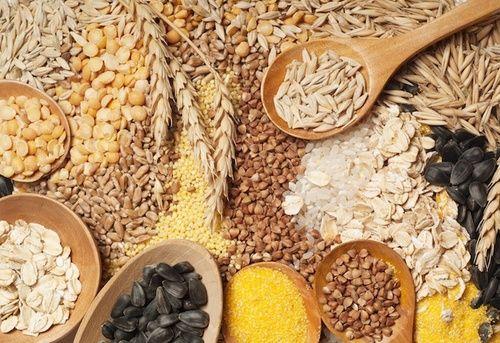Le fibers are a complex of substances contained in foods of plant origin such as fruits and vegetables, classified into non-soluble fiber, soluble fiber and lignans, useful for balance the intestinal flora and lowering the level of cholesterol in the blood. Let's find out better.
> What are the fibers used for and where are they located
> The properties and benefits of fibers
> The effects of fiber deficiency
> Contraindications
Jerusalem artichoke among the foods rich in vegetable fibers

What they are used for and where are the fibers
Most cereals and vegetables contain insoluble fiber, insoluble in water but capable of binding to it, which is why, once ingested, it has the effect of increasing the size and weight of the stool. There insoluble fiber it is mainly represented by cellulose, fermented by the intestinal bacterial flora with the production of short-chain fatty acids, which the cells of the intestine feed on.
Soluble fibers, soluble in water, include:
- hemicellulose: present in the bran, they promote bowel movements by increasing the hydration of the stool, binding to cholesterol and avoiding its absorption;
- gums and mucilage: present in the seeds of plants such as cereals, legumes, nuts and oil seeds. They reduce glucose and insulin levels, lower cholesterol, decrease the sense of hunger and promote weight loss, are laxatives and some of them are used by the food industry as thickeners and stabilizers;
- pectin: they are found on the walls of plant cells and in the peel of fruit. Among their properties is that of forming a gel responsible for reducing cholesterol and used industrially for cakes and jams.
- polysaccharides of algae: used in the food industry as thickeners, emulsifiers and binders.
I lignans they are composed of the important ones anticancer properties, antibacterial, antifungal and antiviral. They are transformed by the intestinal flora into enterolactone and enterodiol, compounds that protect against cancer. Flax seeds, whole wheat, nuts and legumes are rich in it.
Fibers also contain Inositol, Fructooligosaccharides e Galacto-oligosaccharides, also known as prebiotics
You can learn more about which foods are richest in fiber

The properties and benefits of fibers
- beneficial effects of fiber in toto are above all:
- decrease in intestinal transit time
- slowing of gastric emptying with reduction of blood sugar levels after a meal
- increased feeling of satiety
- increased pancreatic function
- increased stool weight
- increase in beneficial intestinal microflora
- increased production of short-chain fatty acids
- decrease in the level of cholesterol and triglycerides in the blood
- more soluble bile
The effects of fiber deficiency
A lack of fiber lead to gastrointestinal disorders and colon diseases (diverticulitis, irritable bowel syndrome, ulcerative colitis, appendicitis, hemorrhoids, hiatal hernia), heart disease (for cholesterol and triglycerides), obesity and type 2 diabetes.
Controindicazioni
The only contraindications of the fibers concern the presence of acute gastritis or disorders such as irritable bowel syndrome, in which an excess of fiber could aggravate symptoms.
READ MORE
Food supplements of natural fibers
Other articles on plant fibers:
> Is eating whole fiber good for you?
> Foods rich in fiber: what are they?
> Dietary fibers, if you know them, you can use them
> The diet against diverticula is rich in vegetable fibers
> Tips for better digesting fiber


























